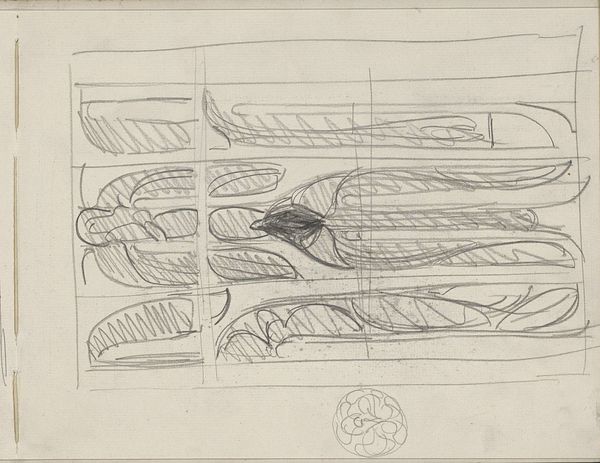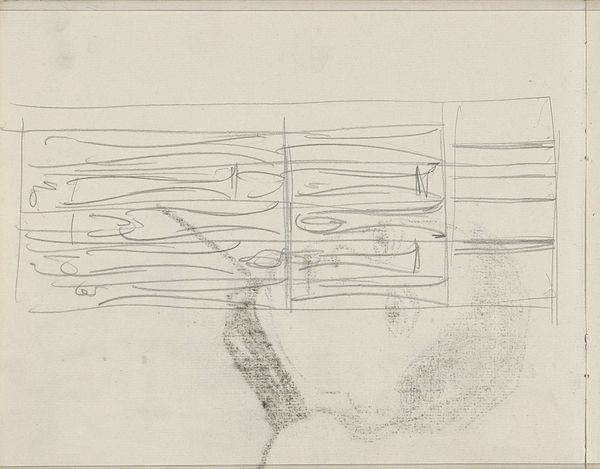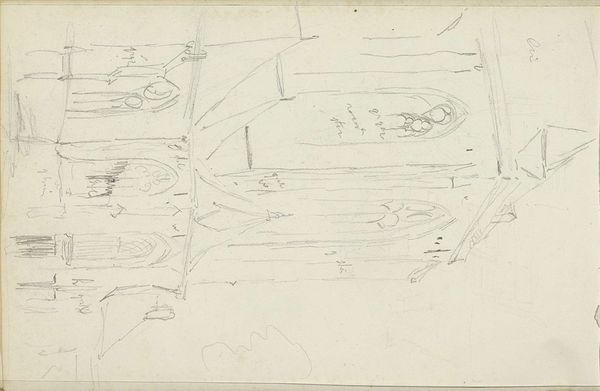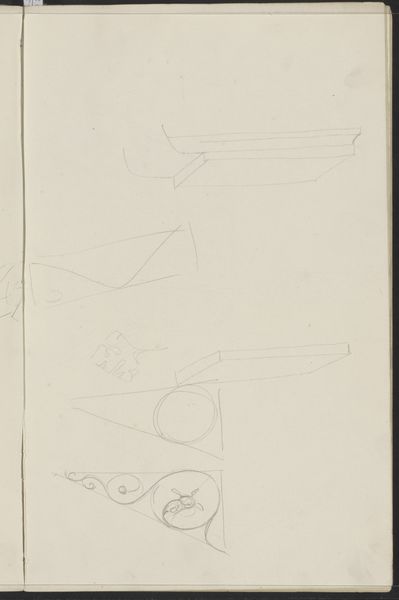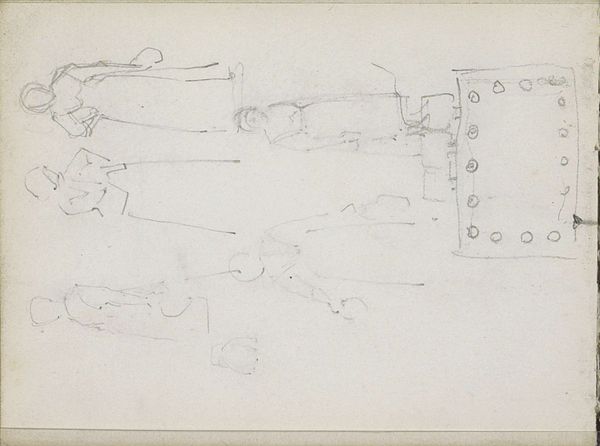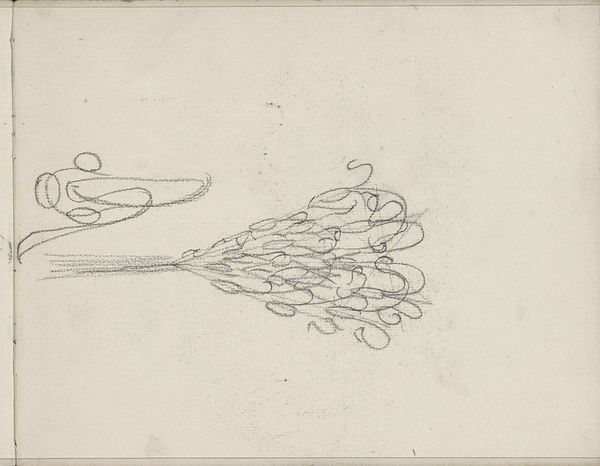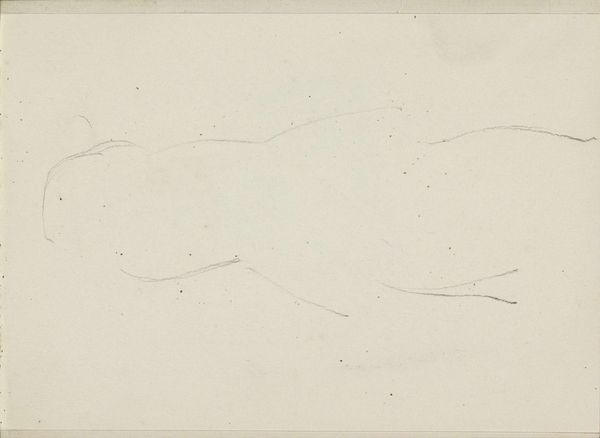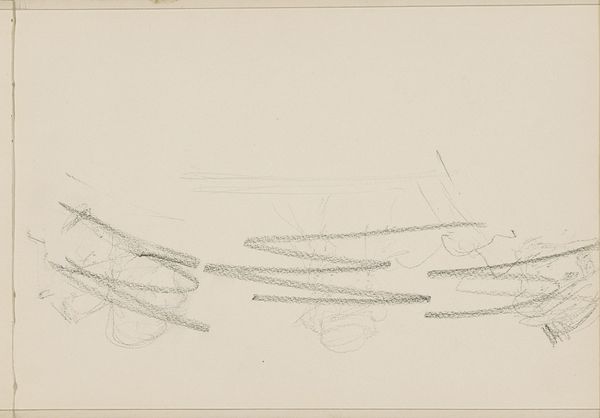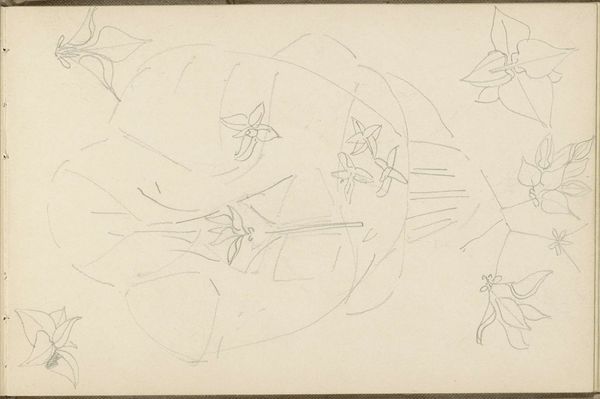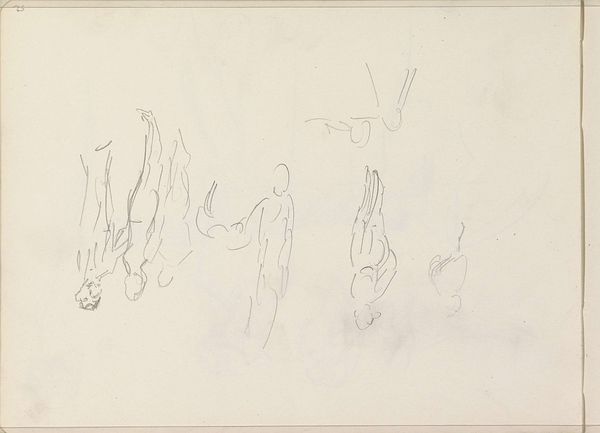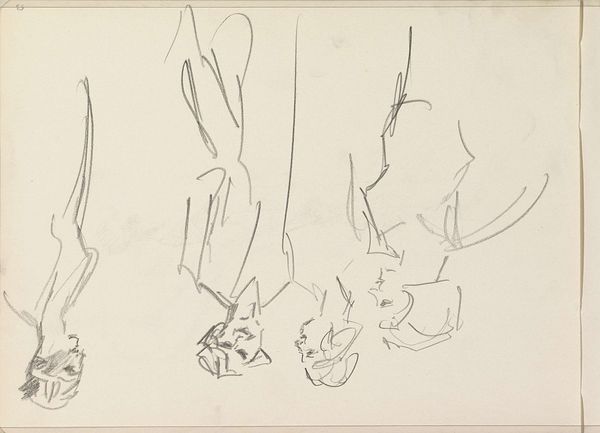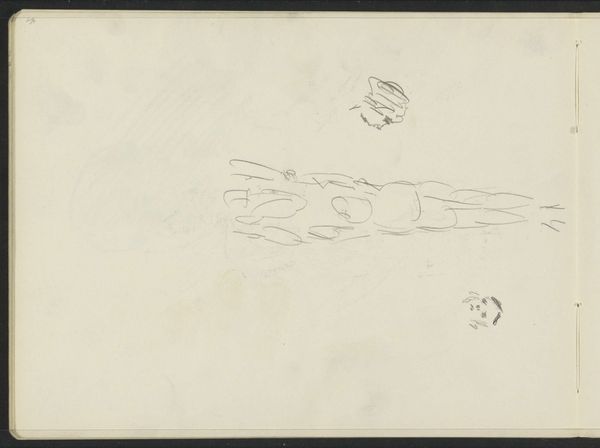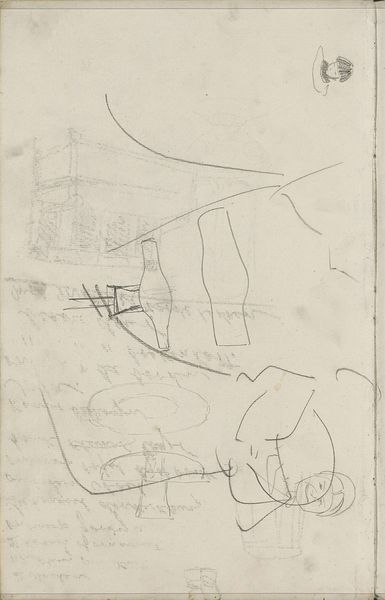
drawing, paper
#
drawing
#
art-nouveau
#
paper
#
geometric
#
line
Copyright: Rijks Museum: Open Domain
Editor: This is a drawing entitled "Floraal motief" by Carel Adolph Lion Cachet, from 1896. It's currently held at the Rijksmuseum. It's a pencil drawing on paper. The composition has this almost skeletal structure; it’s very light and airy, but there’s also something about its repetition that feels a bit haunting. How do you interpret this work? Curator: I see a matrix of budding life, quite literally. Consider the Art Nouveau movement: artists sought to capture the dynamism of nature. It wasn't simply about rendering botanical accuracy, but evoking the underlying forces of growth and transformation. What kind of emotional impact does the image of burgeoning flowers in rows of four have for you? Does this order change how you would otherwise perceive floral art? Editor: Well, on the one hand, I do notice the repetitive nature of the lines, a tension between organic forms and geometric restraint, as if someone is trying to cultivate nature within rigid structures. On the other hand, the skeletal look makes me consider the way art can take away, simplifying forms. Is there an iconographic tradition to organized floral depictions? Curator: Indeed! Throughout history, gardens have served as microcosms of paradise and geometric structures have represented control and intention. Notice, however, that while flowers might connote beauty, even innocence, Cachet presents these blossoms as prototypes in an architect's plan. It gives the artwork an overall industrial vibe, taking floral beauty in a slightly frightening new direction. What do you see emerging as you trace Cachet's cultural symbols? Editor: That is quite interesting. I guess the tension is exactly where its symbolic weight comes from, as if both the comfort and the control that humanity tries to enact upon the natural world are presented at once. Thank you! Curator: A great interpretation. The visual language of this era allows us to understand not only its ideals but also its anxieties about our connection to a quickly changing natural world.
Comments
No comments
Be the first to comment and join the conversation on the ultimate creative platform.
